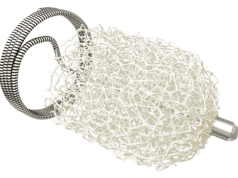
Endologix today announced that the first patient has been enrolled in the company’s JAGUAR study to compare outcomes for the Alto abdominal stent graft system to other commercially available endovascular aneurysm repair (EVAR) devices for the treatment of abdominal aortic aneurysm (AAA).
JAGUAR (Objective analysis to gauge EVAR outcomes through randomisation in a real-world population) is a prospective, randomised, multicentre study that will enrol approximately 450 patients at up to 60 sites worldwide. The study is designed for at least 300 patients to be randomly allocated to the Alto cohort and 150 to the comparator group. All patients will be followed through five years. Results from the study will be independently adjudicated by a third party.
“The availability of compelling clinical evidence for EVAR devices is crucial for making informed treatment decisions and improving patient outcomes,” said Jean Panneton, vascular surgeon with Sentara Vascular Specialists (Norfolk, USA) who treated the patient at Sentara Norfolk General Hospital (Norfolk, USA).
JAGUAR has two primary endpoints: a clinical endpoint and an imaging endpoint. The clinical endpoint is a composite of aneurysm-related complications and consists of freedom from device-related interventions, conversion to open surgery, Type I and III endoleaks, clinically significant device migration, aneurysm enlargement, occlusion, aneurysm rupture and aneurysm-related death. The imaging endpoint is related to proximal neck dilation over time and allows for early insight into mechanisms of graft failure.
“Endologix is committed to investing in clinical evidence,” said Matt Thompson, chief medical officer of Endologix. “JAGUAR joins our LEOPARD study as the only two randomised clinical trials designed to evaluate comparative endograft performance. We believe that this real-world study will provide valuable insights to inform EVAR treatment decisions and improve patient outcomes.”













